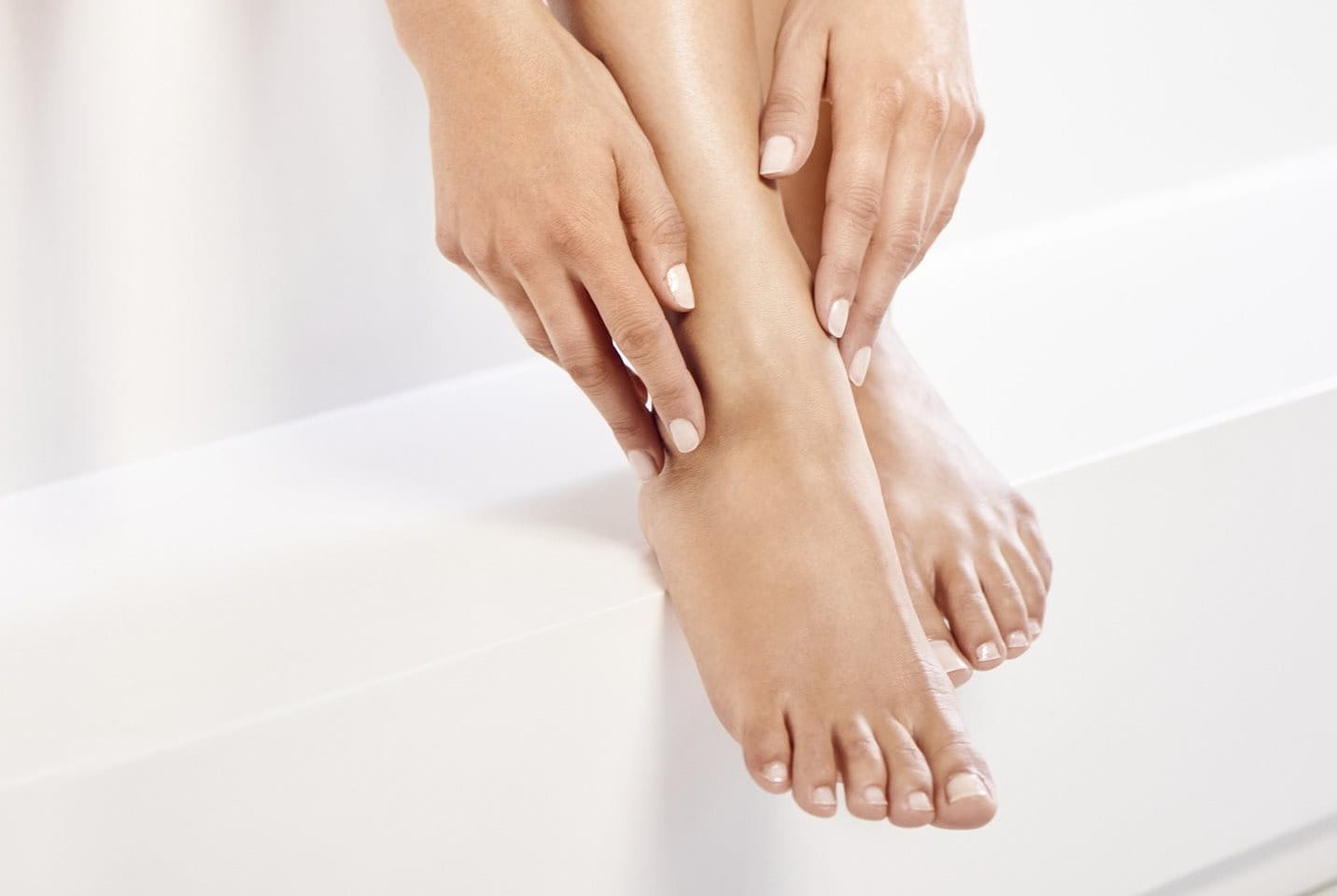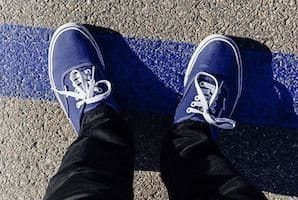What causes dry, cracked heels?
Ill-fitting footwear
Daily activities
Ageing skin
Soaps and hygiene
The temperature of the water that you wash your feet in can cause further irritation. Regularly washing your feet in very hot water dehydrates the skin and causes your heels to become dry, sore and cracked.
Medical conditions
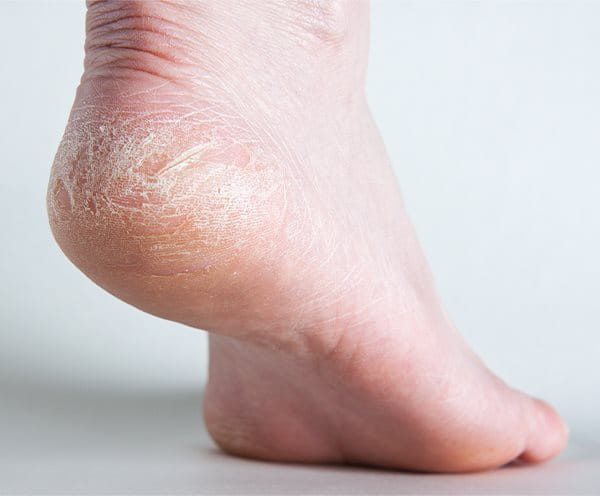
Some medical disorders can increase the risk of cracked heels. These include:
- Diabetes
- Obesity
- Athlete’s Foot
- Fungal infections
- Psoriasis
- Eczema
- Hypothyroidism
If you think a medical condition may be causing your dry cracked heels it is advisable to seek the advice of a medical professional.
Cracked heel symptoms
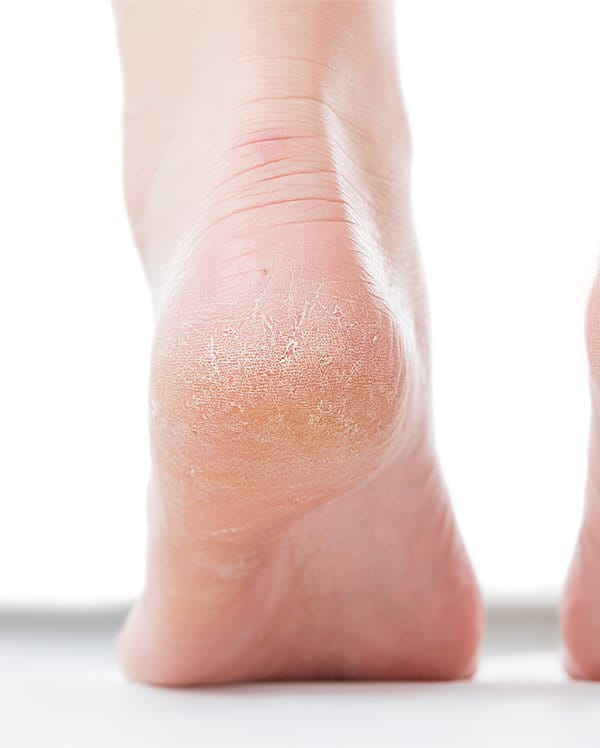
Cracked heels form when the skin around your heel becomes damaged and thickened. The damaged skin splits creating the cracks that you can see. Most people will know that they are suffering with cracked heels simply due to their appearance but other symptoms you may experience are:
- Flaky skin
- Itching
- Pain/soreness
If your symptoms become more severe, i.e. you experience ulceration, swelling and/or a loss of feeling in your heel, you may have an infection which will need to be treated by a medical professional.
Treatment for cracked heels
There are many excellent home remedies for treating dry feet and cracked heels that won’t cost you a fortune. Using easy to find, natural products in your cupboards that you have at home is all you need to get started.
- Exfoliation: Regular exfoliation of your feet and heels will help to remove any dead dry skin and prevent the build-up of thick skin on your heels. There are many different types of exfoliating products available from foot scrubs, to loofahs and electronic skin removers.
- Soaking: A regular foot soak will also help to keep your skin soft and supple. Soaking your heels in a warm bath with natural ingredients that contain antibacterial properties such as honey, vinegar or tea tree oil will keep your heels healthy and prevent them from cracking.
- Heel balms and moisturisers: Use an intensive specialist healing cream when your cracked heels are at their worst. Choose a cream that has a high percentage of Urea, which helps prevent the skin from losing water and encourages the dead skin to gently fall off. Once your heel cracks have improved, maintaining a regular daily moisturising routine will help to prevent your feet from becoming dry and cracked again.
- Pedicure: This is the perfect way to give your feet and heels some love and attention. Our detailed 10-step pedicure guide tells you everything you need to know about creating the perfect home pedicure to get your dry heels in tip top shape.
How to prevent dry, cracked heels
Wear the right footwear
Using custom made insoles which will help to ensure your feet are perfectly positioned in your shoes, helping to cushion your heel and ensure pressure is spread evenly over your whole foot.
If you spend many hours wearing high heels each day you are unfortunately more likely to suffer with cracked heels. Read our 'How to wear high heels and platforms without straining your feet' article for top tips and advice on how best to prevent putting excessive pressure on your feet.
Wear the right socks
Exfoliate and moisturise
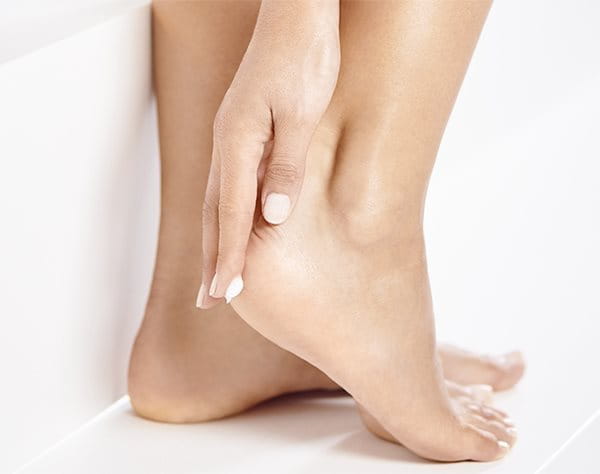
Regularly moisturising your feet and heels both day and night will help them to rehydrate. Treat yourself to a relaxing weekly foot soak in warm (not hot) water to help remove dry dead skin. Remember to include nourishing oils for the ultimate treat for your feet.
Check with your doctor
If your dry cracked heels do not improve, or you are concerned that you might have an infection, it is important that you talk to your doctor. You can find further advice about [dry feet] or corns and calluses on the Elastoplast website.




